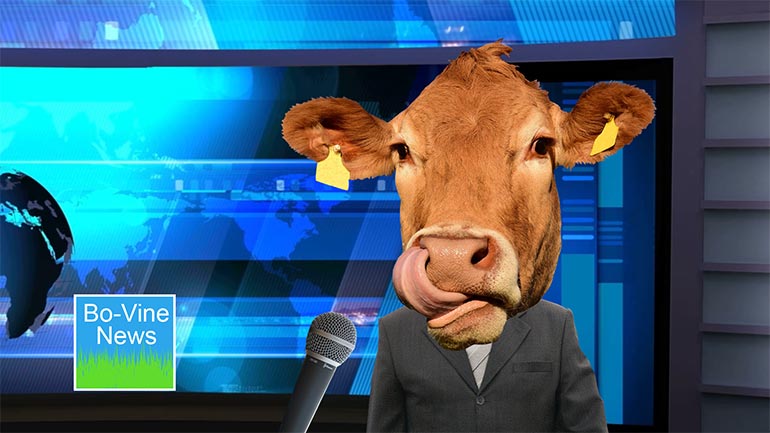ShmoopTube
Where Monty Python meets your 10th grade teacher.
Search Thousands of Shmoop Videos
Finance: What is a Secondary Offering? 16 Views
Share It!
Description:
What is a secondary offering? After a company has its IPO, there is often a lockup period of stock held by directors, institutions and other “insiders” who invested into the company when it was still private in either cash or in services. When that lockup period has expired, the amount of stock they own that becomes free trading, and thus part of the float, would be considered a non dilutive secondary offering. In the case of a dilutive secondary offering, the company may issue additional shares to raise capital for a particular project, acquisition, or if demand is causing too much trading volatility and more shares are needed but the company prefers to raise additional capital that enacting a forward split.
- Social Studies / Finance
- Finance / Financial Responsibility
- Life Skills / Personal Finance
- Finance / Finance Definitions
- Life Skills / Finance Definitions
- Finance / Personal Finance
- Courses / Finance Concepts
- Subjects / Finance and Economics
- Finance and Economics / Terms and Concepts
- Terms and Concepts / Banking
- Terms and Concepts / Company Valuation
- Terms and Concepts / Investing
- Terms and Concepts / IPO
- Terms and Concepts / Metrics
- Terms and Concepts / Stocks
- Terms and Concepts / Trading
- College and Career / Personal Finance
Transcript
- 00:00
finance a la shmoop. what is a secondary offering?
- 00:06
okay so hangers has gone public. in an IPO that was its primary offering. hint hint.
- 00:14
and hangers yes well they sell hangers. well hey if Staples can do it you know [man stands in front of hangers]
- 00:18
why not? anyway well how'd they go public well yes it was an IPO or initial public
- 00:23
offering, the first offering of formerly private shares to the public. but here
Full Transcript
- 00:28
we're talking about a secondary offering so what does that mean? well usually
- 00:33
young companies have a bunch of insiders- people like the founders and the
- 00:37
employees and the original investors, and everyone wants to buy a home a Porsche a
- 00:42
diamond-studded Fitbit ,you know whatever. and in many cases the shares of these
- 00:47
early companies like hangers, represent almost all of the net worth of the
- 00:52
insider. so understandably they want to not have all of their eggs in one basket
- 00:57
or one stock in this case right? well they want to diversify. that is they want [eggs in a basket]
- 01:03
to sell some of their shares and get cash and then go buy a home a car or buy
- 01:08
bonds or a mutual fund or an index fund or some other presumably safer
- 01:12
investment vehicle than hangers. well the rule in most cases is that insiders
- 01:17
cannot sell their own shares until at least six months and change after the
- 01:22
company has begun trading publicly. it's called the 144 a rule. write that down
- 01:27
actually don't write down. all right but when they do sell they generally want to
- 01:30
work as a team so that their shares can be placed into the hands of funds who
- 01:35
have demand to hold their shares awhile right> they don't want to just dump the
- 01:39
shares into the market crater the stock and well basically screw everyone else.
- 01:43
how is this important? well let's think through a process here if everyone just
- 01:48
hit the panic dump button at 6:31 a.m. California time, the day that they could [dump button pictured]
- 01:54
first legally sell shares, well odds are good that the stock price which had been
- 01:59
hovering nicely at $32 and 12 cents a share give or take a dime or two, would
- 02:03
suddenly plunge with the massive extra supply of shares,
- 02:07
and not a splurge in demand to meet it. so then all of a sudden the stock is at
- 02:12
23 bucks a share and falling and the marketplace thinks that don't know
- 02:17
somebody something must be wrong with this somebody must know something so we
- 02:21
should dump too. and then it's kind of like sympathy stock diarrhea and not a
- 02:25
good situation as the stock is looking at 12 bucks. so normally the investment
- 02:30
bank who took the company public in the first place would circle with the [bankers and investors placed in a circle]
- 02:33
investors who bought in and are still holding the shares of hangers and they
- 02:37
place more shares in their hands. and they do this in the form of what is
- 02:41
called a secondary offering, yes it took us a while to get there but we did, which
- 02:45
is largely like an IPO lite. the management team might need to meet with
- 02:50
a fifth or a tenth as many of the investors they met on the IPO, and just
- 02:55
refresh conversations as they relate to publicly available information and
- 02:59
guidance on how well or poorly the company is doing, then they place those
- 03:03
shares that is sell say 2,000 of them per person and well you know they move
- 03:09
on. then they place those shares and let's say there's five million of them [stack of stocks]
- 03:13
and they spread them around to all the mutual funds and hedge funds buying them,
- 03:16
and then give the insiders their cash. so now a whole new group of folks have been
- 03:21
given the enviable opportunity to own hangars and while the employees and
- 03:25
investors that have been there since day one yeah well they get to cash out at
- 03:29
least partly, and let's just say that for them driving to work is now a thing of
- 03:33
the past. [man uses laptop from bed with an empty bag of chips next to him]
Up Next
GED Social Studies 1.1 Civics and Government
Related Videos
What is bankruptcy? Deadbeats who can't pay their bills declare bankruptcy. Either they borrowed too much money, or the business fell apart. They t...
What's a dividend? At will, the board of directors can pay a dividend on common stock. Usually, that payout is some percentage less than 100 of ear...
How are risk and reward related? Take more risk, expect more reward. A lottery ticket might be worth a billion dollars, but if the odds are one in...




